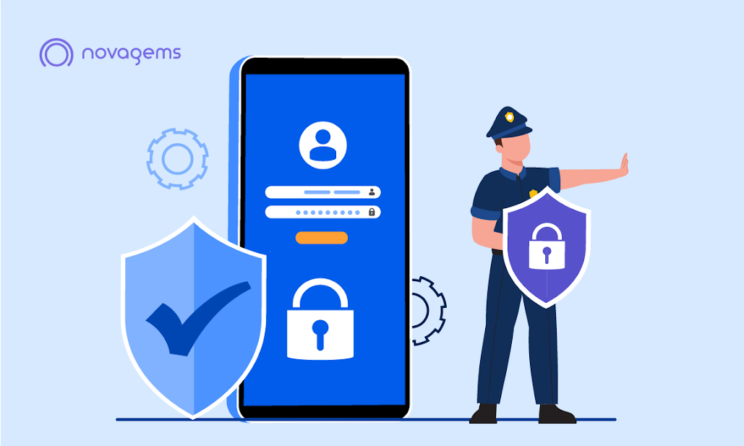
In today’s fast-paced world, businesses face a variety of risks, from physical security threats to compliance issues. Managing these risks requires a mix of expertise, strategic planning, and the use of modern technology. One of the most helpful innovations in this field is the security guard app. These digital tools are changing how organizations handle risks and ensure safety. Let’s take a closer look at the important role security guard app play in managing risks in today’s world.
1. Proactive Risk Identification
Security guard apps help organizations find risks before they become bigger problems. By giving guards mobile technology, these apps make it possible to collect and analyze data in real time.
-
Incident Reporting: Guards can quickly report unusual activities or possible threats using the app.
-
Geolocation Insights: Apps with GPS tracking highlight high-risk areas based on past events.
-
Pattern Recognition: Data analysis features help spot repeated risks, making it easier to fix them.
By handling risks early, businesses can avoid problems and reduce potential losses.
2. Enhanced Communication During Emergencies
Clear and fast communication is very important in reducing risks, especially during emergencies. Security guard apps give a centralized platform for guards, supervisors, and stakeholders to stay connected.
-
Emergency Alerts: Instant notifications ensure everyone knows about critical situations.
-
Incident Logs: Real-time updates allow teams to work together better during emergencies.
-
Two-Way Communication: Guards can receive instructions and share updates immediately.
This smooth communication helps quick decisions and reduces response times during crises.
3. Detailed Risk Assessments
Managing risks well starts with understanding possible vulnerabilities. Security guard apps help with detailed risk assessments by collecting data from different sources.
-
Activity Reports: Guard activities are logged with time stamps, giving insights into patrol patterns.
-
Incident Heatmaps: Apps can create visual maps of areas with high risk.
-
Customizable Checklists: Guards can follow checklists to evaluate risks systematically.
These tools help businesses create smart strategies to reduce risks.
4. Real-Time Monitoring and Reporting
Traditional risk management often involves delays in getting and sharing information. Security guard apps remove these delays by allowing real-time monitoring.
-
Live GPS Tracking: Supervisors can see where guards are and make sure they follow their schedules.
-
Instant Incident Updates: Photos, videos, and notes can be shared directly through the app.
-
Dashboard Analytics: A central dashboard shows an overview of all activities and incidents.
Real-time visibility ensures risks are addressed quickly and effectively.
5. Better Compliance and Accountability
Businesses need to follow industry rules and internal policies to manage risks properly. Security guard apps help by offering tools for monitoring and keeping records.
-
Automated Logs: All activities and incidents are recorded digitally, reducing the chance of mistakes.
-
Policy Access: Guards can read company rules directly from the app.
-
Audit Trails: Time-stamped records provide reliable proof for compliance checks.
This accountability reduces legal and operational risks and protects the company’s reputation.
6. Efficient Use of Resources
Managing risks often requires making the most of limited resources. Security guard apps help by giving data-driven insights for better resource use.
-
Guard Deployment: Supervisors can assign guards to high-risk areas using real-time data.
-
Incident Prioritization: Apps rank incidents by how severe they are, ensuring urgent issues are handled first.
-
Performance Metrics: Guard performance is monitored to make sure personnel are used effectively.
Using resources wisely lowers costs and improves security overall.
7. Predicting Future Risks
Modern security guard apps use predictive analytics to guess future risks. By studying past data, these apps offer insights that guide decision-making.
-
Trend Analysis: Finding patterns in incidents helps predict risks.
-
Scenario Planning: Apps can simulate different situations to check preparedness.
-
Preventive Measures: Data insights help organizations take steps to avoid future incidents.
This approach ensures businesses are ready for emerging threats.
8. Building Trust with Stakeholders
Managing risks isn’t just about solving problems; it’s also about building trust with clients, employees, and partners. Security guard apps show a commitment to safety and transparency.
-
Client Access: Some apps let clients view reports and track activities in real time.
-
Regular Updates: Detailed reports keep stakeholders informed about security efforts.
-
Professionalism: Using advanced tools reflects a commitment to high-quality services.
This trust strengthens relationships and improves the organization’s reputation.
9. Eco-Friendly Risk Management
Security guard apps support environmentally friendly practices by reducing the need for paper-based reporting and documentation.
-
Paperless Reporting: Digital records mean less paper waste.
-
Sustainability Goals: Using apps helps businesses align with green initiatives.
For many businesses, this is an added benefit that reflects their commitment to sustainability.
Conclusion:
Risk management is more complicated today than ever before. Security guard apps provide a strong solution by combining real-time data, predictive analytics, and better communication. From finding risks early to using resources wisely, these apps help organizations handle threats effectively and create a safe environment.
For businesses aiming to stay ahead in today’s fast-changing world, using a security guard app is not just a smart move—it’s a necessary one. By taking advantage of these tools, companies can protect their assets, build trust with stakeholders, and ensure a secure future.





